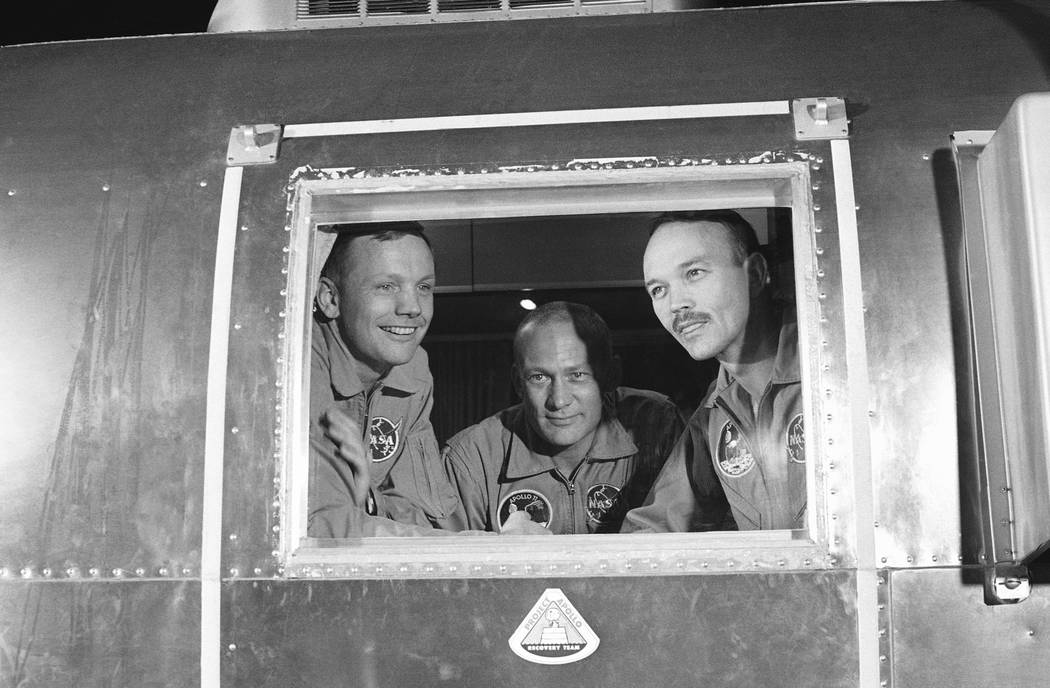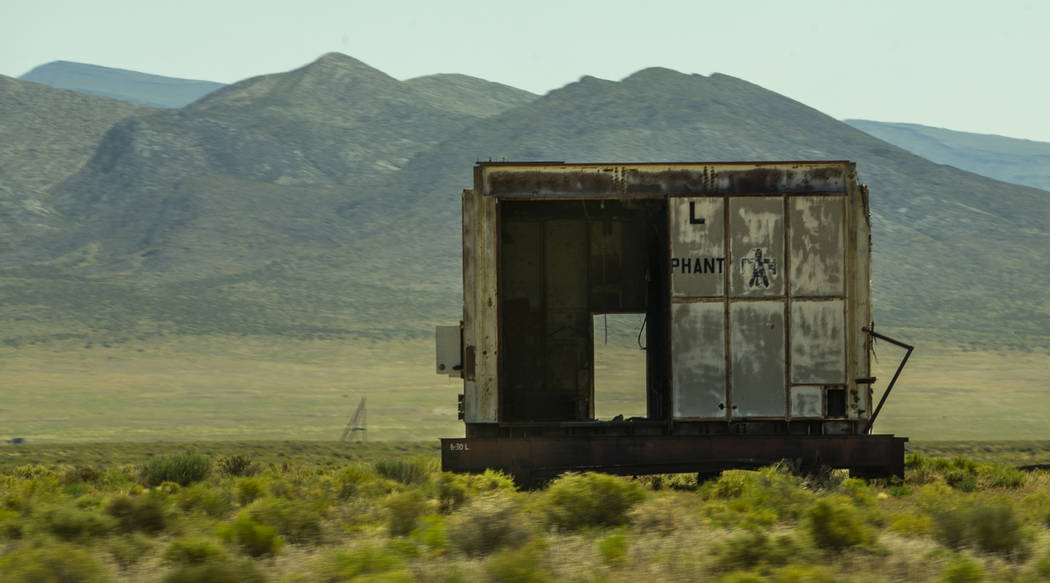Apollo 11 astronauts all had Silver State connections
By the time the crew of Apollo 11 trained at the Nevada Test Site in February 1965, all three men were already familiar with the Silver State.
Almost two decades before he piloted the command module into lunar orbit, Michael Collins completed advanced fighter jet training at Nellis Air Force Base in the early 1950s.
Lunar module pilot and second man on the moon Buzz Aldrin spent about a year as a Nellis gunnery instructor after flying combat missions in Korea. Then he returned to Nevada in 1964 for three days of desert survival training with Collins and 12 other astronauts in a remote area outside of Reno.
But none of those experiences could match the drama of Neil Armstrong’s two unscheduled stops in Nevada within a month of each other.
The first came on April 24, 1962, when Armstrong was scouting a dry lake bed in central Nevada for use as an emergency landing site for X-15 test flights out of Edwards Air Force Base in California.
When the future Apollo 11 commander attempted a “touch-and-go” maneuver on the lake bed, his T-33 trainer got stuck in the mud, stranding him and his copilot that day, famous test pilot Chuck Yeager, in the middle of nowhere.
(Biographies of the two men give differing accounts of the incident. Yeager said he warned Armstrong not to land on the soggy playa. Armstrong said Yeager never tried to talk him out of the touch-and-go, but rather encouraged him to perform the maneuver a second time and laughed when they got stuck.)
Then came what author and historian James R. Hansen calls the “Nellis Affair.”
During another dry lake scouting flight over Lincoln County, on May 21, 1962, Armstrong made a hard landing on Delamar Dry Lake, damaging his F-104.
According to “First Man: The Life of Neil A. Armstrong,” Hansen’s 2005 authorized biography of the astronaut, the jet’s radio was knocked out and hydraulic fluid was leaking from the aircraft, causing its tail hook to release. When Armstrong attempted to land the aircraft at Nellis, about 90 miles away, he unwittingly caught the runway’s arresting cable and dragged the heavy anchor chain it was attached to across the landing strip.
“Down the runway for hundreds of feet, this way and that, links of heavy, broken anchor chain when careening like desert tumbleweeds,” Hansen writes. “The F-104 stopped dead in its tracks.”
It took more than 30 minutes to clear the runway and reset the cable.
Later that afternoon, Edwards Air Force Base sent another pilot in a two-seat F-104B to collect Armstrong, but that aircraft landed hard in a strong crosswind, blowing out a tire on its landing gear and prompting a second NASA-related runway closure at Nellis.
According to Hansen, the base operations officer finally threw up his hands when a second two-seat aircraft sent to get Armstrong, a T-33, nearly overshot the reopened runway.
“Please don’t send another NASA airplane!” the officer reportedly yelled, before arranging to have at least one of the stranded pilots from Edwards sent back to California on an Air Force transport.























